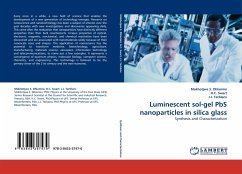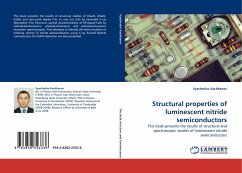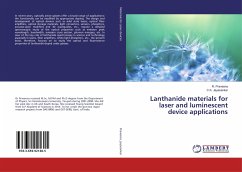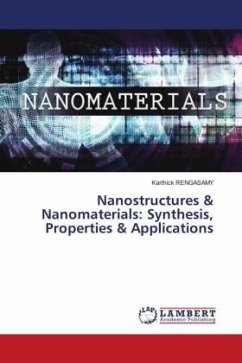
Luminescent sol-gel PbS nanoparticles in silica glass
Synthesis and Characterization
Versandkostenfrei!
Versandfertig in 6-10 Tagen
39,99 €
inkl. MwSt.

PAYBACK Punkte
20 °P sammeln!
Every once in a while, a new field of science that enables the development of a new generation of technology emerges. Research on nanoscience and nanotechnology has been a subject of interest over the past decades with new investigations and discoveries appearing daily. This came after the realization that nanoparticles have distinctly different properties than their bulk counterparts. Unique properties of optical, electronic, magnetic, mechanical, and chemical reactivities have been discovered and are associated with nanomaterials solely because of their nanoscale sizes and shapes. The applic...
Every once in a while, a new field of science that enables the development of a new generation of technology emerges. Research on nanoscience and nanotechnology has been a subject of interest over the past decades with new investigations and discoveries appearing daily. This came after the realization that nanoparticles have distinctly different properties than their bulk counterparts. Unique properties of optical, electronic, magnetic, mechanical, and chemical reactivities have been discovered and are associated with nanomaterials solely because of their nanoscale sizes and shapes. The application of nanoscience has the potential to transform medicine, biotechnology, agriculture, manufacturing, materials science, aerospace, information technology and telecommunications, to name just a few examples. It represents a convergence of quantum physics, molecular biology, computer science, chemistry, and engineering. This technology is believed to be the primary driver of the 21st century and the new economy.












